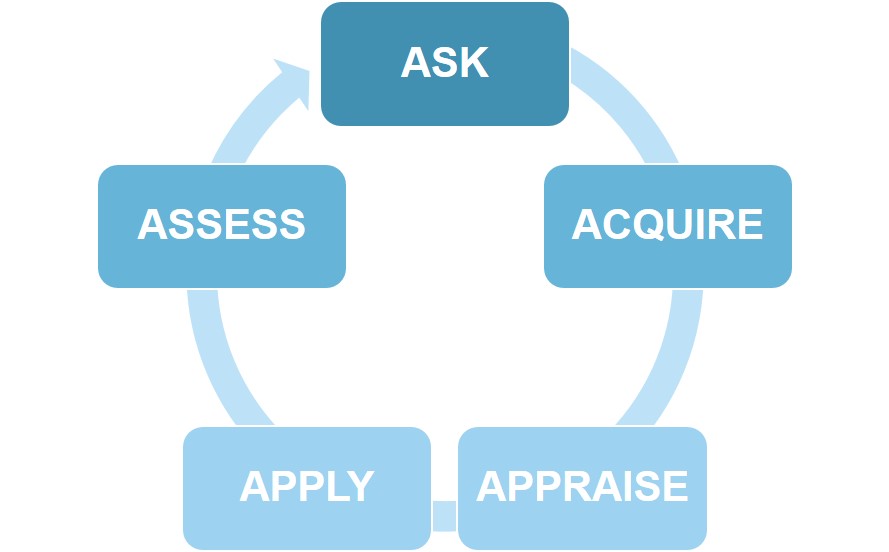This guide has been designed to assist College of Health & Biomedical Science students to understand and apply the key steps of the Evidence based practice process.
The guide contains relevant resources and tools including links to books, journal articles, web resources and videos.
First defined by David Sacket (1996), evidence based practice is “the conscientious, explicit and judicious use of current best evidence in making decisions about the care of the individual patient. It means integrating individual clinical expertise with the best available external clinical evidence from systematic research".
More recently Hoffman et al. (2016), defines Evidence based practice (EBP) as "the integration of the best research evidence with clinical expertise and the patient’s unique values and circumstances. Additionally, it also requires the health professional to take into account characteristics of the practice context in which they work" (p.3).

Hoffmann, T., Bennett, S., & Mar, C. D. (2016). Evidence-based practice across the health professions (3rd ed.). Chatswood, Australia: Elsevier Australia.
Sackett D L., Rosenberg W M. C., Gray J. A. Muir, Haynes R. Brian, & Richardson W. Scott. (1996). Evidence Based Medicine: What It Is And What It Isn’t: It’s About Integrating Individual Clinical Expertise And The Best External Evidence. BMJ: British Medical Journal, 312(7023), 71–72.
"Learn what is evidence-based practice, why it makes a difference and why evidence-based practice is so important in healthcare today"
Source: Lippincott NursingCenter.com. (2016, March 1). What is Evidence-Based Practice? [Video]. YouTube. https://www.youtube.com/watch?v=5yReXbAh7xI

Five key steps in Evidence based practice, these include:
1. Ask: a structured and focused clinical question
2. Acquire: Identify appropriate resources & search for the best research evidence to answer your question.
3. Appraise: Appraise the evidence for its validity (closeness to the truth), impact and applicability (usefulness in clinical practice)
4. Apply: the evidence to the practice setting
5. Assess: evaluating effectiveness and efficiency in executing steps 1 to 4
Straus, S. E., Glasziou, P., Richardson, W. S., & Haynes, R. B. (2018). Evidence-based medicine: How to practice and teach it (5th ed.). Churchill Livingstone Elsevier.
Research Methods in Health: foundations for evidence-based practice by Pranee Liamputtong (2017)
Call Number: 610.7 RES
Additional Evidence based practice resources available online:
Reference materials such as dictionaries, encyclopedias and glossary's are great resources for definitions for key terms and concepts.
 This content is licensed to Victoria University under a Creative Commons Attribution 4.0 International License.
This content is licensed to Victoria University under a Creative Commons Attribution 4.0 International License.
|
|
|
We acknowledge the Ancestors, Elders and families of the Kulin Nation (Melbourne campuses), the Eora Nation (Sydney campus) and the Yulara/Yugarapul and Turrbal Nation (Brisbane campus) who are the traditional owners of University land. As we share our own knowledge practices within the University, may we pay respect to the deep knowledge embedded within the Aboriginal community and recognise their ownership of Country. |
